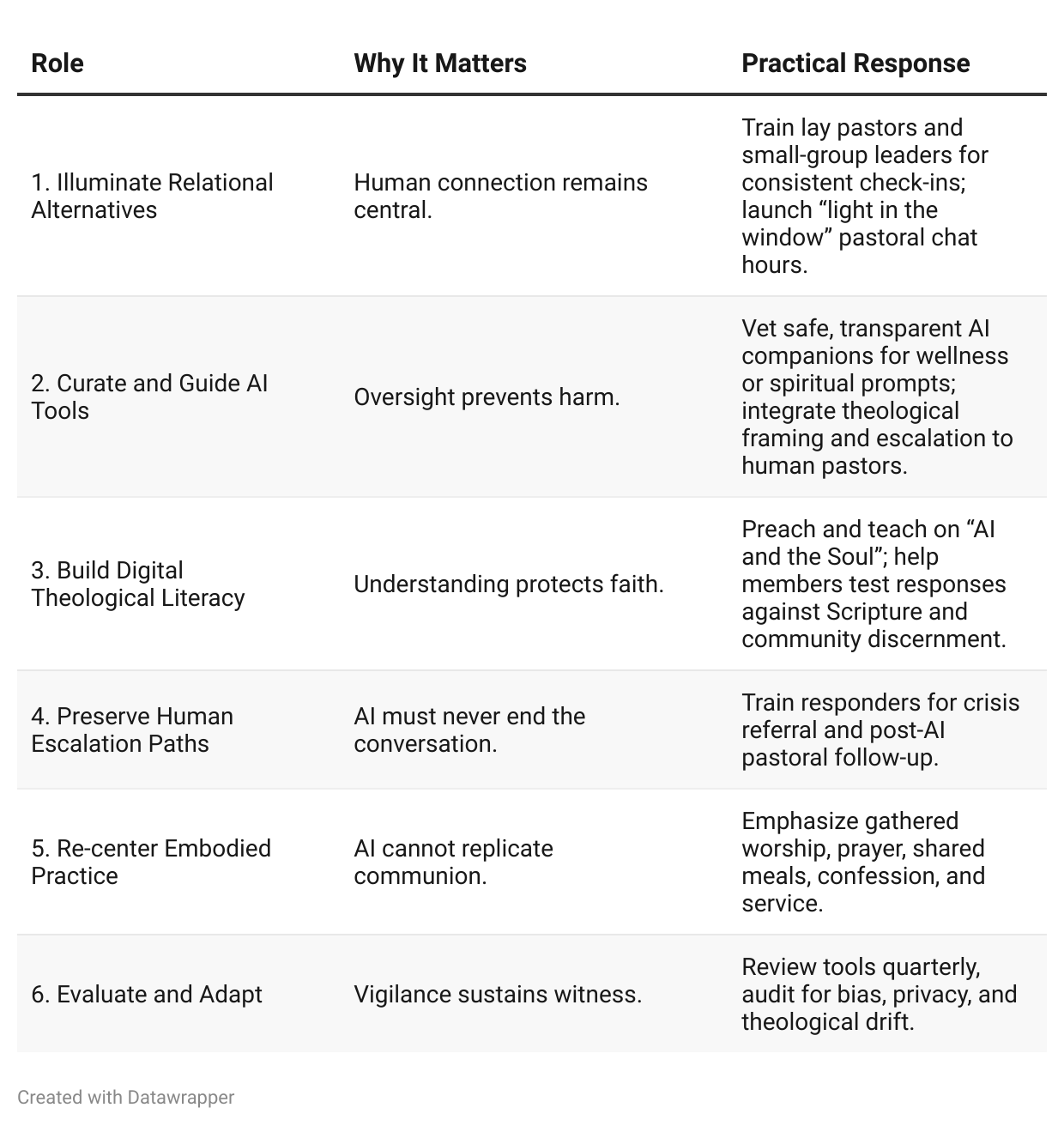The Lamp in the Window: How the Church Can Respond to AI Emotional Companions
Why faith communities must tend the hearth while welcoming new lamps
“You’ve passed harder seasons.”
— a nightly AI wellness check-in speaking into a lonely dark
Camila reaches for her phone at night. The AI wellness bot she opens asks, “How are you tonight?” She replies: “Worried. Helpless.” Moments later, it offers a breathing exercise and a quiet reminder: “You’ve passed harder seasons.”
That small ritual becomes her lamp in the window—steady, calm, available.
AI companions are increasingly filling emotional gaps left by strained mental-health systems and fading community networks. The church now faces a new pastoral frontier: how to engage this digital presence without letting it replace embodied care.
The Tension: A Light in the Window or a Substitute for the Hearth?
Loneliness is rising. Surveys show record isolation across generations.
AI offers availability. Therapy bots and wellness agents provide 24/7 responses.
But presence ≠ relationship. The church must re-assert that true healing happens in human community.
If the church does not respond, the glow of AI may replace the warmth of the hearth.
Theological and Pastoral Stakes
Authority — AI does not hold faith. It simulates conviction through probability, not spiritual truth.
Embodiment — Ministry is incarnational: touch, prayer, meal, presence. AI lacks flesh.
Privacy — Data from “spiritual chats” can be harvested or sold. Confidentiality is not guaranteed.
Community — If people feel more seen by an algorithm than by the church, discipleship fractures.
Equity — Digital tools can widen access gaps. Some thrive online; others are excluded.
The church must neither demonize nor deify AI. It must discern its proper place.
A Framework: The Lamp, Not the Hearth
Case: The “Digital Prayer Partner”
A congregation deploys a secure, open-source “Prayer Partner” AI for members. It offers brief nightly prompts:
“How did you feel today? Name one worry and one hope.”
If distress signals appear, it connects the user to a real pastor. Weekly, anonymized trend reports inform sermons and care ministry.
The result: greater awareness, not replacement—a lamp that points to the hearth.
The Church’s Response
Teach the congregation what AI is and is not.
Curate tools that serve—not replace—pastoral presence.
Develop a theology of digital care rooted in incarnation.
Invest in human availability: mentoring, pastoral visits, shared rhythms.
Use data ethically to see flock patterns, never to replace relationship.
The lamp may glow in many windows, but only the hearth can warm the soul.
Benediction
May the church keep its hearth alight.
May its doors remain open to those wandering digital roads.
May AI lamps point homeward, not away.
And may every algorithm, however helpful, serve the love that only embodied community sustains.



